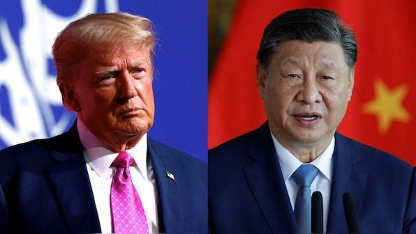Skyrocketing food costs and insecurity are the devastating consequences of Donald Trump’s administration’s tariffs on goods coming to America from countries such as China, Canada, Mexico, and the European Union. A tariff is a tax on goods imported from abroad.
According to the prophetic word for 2025 and onwards, there will be increasing reports of famines this year and going forward.
“Food shortages will continue to become the reality, globally. Many more will die of starvation,” it was noted in the prophecy.
The prophecy, which preceded Trump’s inauguration on January 20, is now unfolding. Trump had announced a 25% levy on Canadian and Mexican imports, as well as an additional 10% tax on Chinese goods. The US president said the move was in response to his concerns about illegal immigration and drug trafficking. Both Canada and Mexico said they were preparing similar tariffs on US goods, while China said it would be applying necessary countermeasures.
Trump, earlier this week, agreed to a 30-day pause on his tariff threats against Mexico and Canada after both trading partners took steps to appease his concerns about border security and drug trafficking.
“I am very pleased with this initial outcome, and the tariffs announced on Saturday will be paused for a 30-day period to see whether or not a final economic deal with Canada can be structured,” Trump posted on social media. “FAIRNESS FOR ALL!”
Canadian Prime Minister Justin Trudeau has vouched that his government would name a fentanyl czar, list Mexican cartels as terrorist groups, and launch a “Canada-U.S. Joint Strike Force to combat organized crime, fentanyl, and money laundering; while Mexico has also vouched to allow for a period of negotiations over drug smuggling and illegal immigration. Mexico has agreed to send 10,000 members of the National Guard to the US-Mexican border to “prevent the trafficking of drugs, in particular fentanyl, from Mexico to the US.”
Although Trump has agreed to put planned tariffs on hold for Mexico and Canada for 30 days, he could still impose them later. The 10% tariff that he ordered on China is still set to go into effect as scheduled, although Trump plans to talk with Chinese President Xi Jinping in the next few days.

Beijing announced several economic measures targeting the United States on Tuesday. The new duties, announced by China’s Ministry of Finance, include a levy of 15% on certain types of coal and liquefied natural gas and a 10% tariff on crude oil, agricultural machinery, large-displacement cars, and pickup trucks. The measures are set to take effect on February 10.
Economists have warned that the introduction of the import taxes by the US and the responses from other countries could lead to prices rising on a wide range of products, from cars, lumber, and steel to food and alcohol.
Already, food prices were increasing globally due to conflicts, among other things. As reported by the Global Report on Food Crises (GRFC) 2024, nearly 282 million people—21.5% of the analysed population across 59 countries and territories—face high levels of acute food insecurity. This is 24 million more people than in 2022.
“Conflict and insecurity, along with extreme weather events and economic shocks, are the key drivers of food insecurity and nutrition crisis,” said Dominique Burgeon, Director of the Food and Agriculture Organization (FAO) Liaison Office in Geneva.
Over 26 million people are one step away from famine, while the total population in catastrophe was “more than four times higher than in 2016,” said Burgeon, citing a report that was produced by the Global Network Against Food Crises (GNAFC). The GNAFC is a multi-stakeholder initiative that is working to address food crises.
“The impacts of economic shocks affected 21 countries where around 75 million people were facing high levels of acute food insecurity, due to their high dependency on imported food and agricultural inputs, persisting macroeconomic challenges, including currency depreciation, high prices, and high debt levels.”






